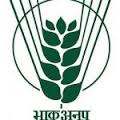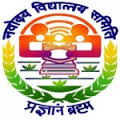
Shri Sunakar Mishra of village Mahisara under Dharmasala block and Jajpur district in Orissa has developed a 35 acres large rice-fish farm following the technology developed at CRRI, Cuttack. He has availed a loan amount of Rs 53 lakh for mainly the land shaping and some amount (Rs 3.70 lakh) for seeds of rice, fish and prawn, out of the total Rs 93.52 lakh sanctioned by State Bank of India, Jajpur Town Branch. The farmer purchased a Pocoline Hitachi Machine (LNT 90) and did entire earth work in the farm. The project includes a subsidy amount of Rs 20 lakh from Agricultural Production and Investment Corporation Limited (APICOL), Orissa to be released after completion of the scheme. Shri Mishra grows CRRI semi-deepwater rice varieties (Varshadhan, Durga) along with around 3 lakhs juveniles of fresh water prawn (Macrobrachium rosenbergii) and 2 lakhs fry of fish (Catla, Catla catla and Rohu, Labeo rohita). Vegetables (Bitter gourd, okra, ridge gourd), tuber crops and pulse (Pigeon pea) are being grown on wide bunds (8 meter) all around. The farmer plans to grow around 10,000 improved Guava and 2,000 tissue cultured Banana, 200 Coconut plants, besides agro-forestry with 2,000 Sisso (Dalbergia sisso) plants. Shri Mishra expects an annual return of Rs 60 lakhs from the farm and is confident of refunding the entire released loan amount in the first year itself. Further, the farmer also visualizes phase by phase utilization of Rs 2.2 crores for farm and other infrastructures development in his total 60 acres area and desires to take up commercial farming of rice including quality rice, fish, prawn, horticultural crops, plantation crops and agro-forestry in the farm with expert advice of CRRI scientists.
The farmer get a net income of Rs 16 lakh from rice-fish-prawn and other crops. In the year 2007-08 the farmer took another Rs 60 lakh of loan and expanded and renovated the area to a total area of 65 acre, these includes 3 farms in which rice-fish farming is done in two farms of 55 acre (35+20 acre) and fresh water prawn is being grown in 10 acre area. He has planted 350 saplings of improved mango variety "Amrapali", besides, coconut and other agro-forestry plants on bunds. He also growing number of vegetable crops on bunds. He has a plan to integrate the poultry component this year and expects much more increase in income.
Coastal part of Orissa frequently faces cyclone of different intensities, particularly in the months of September to November resulting in the damage of wet seasons rice and other field crops to varying degrees. In the end of October 1999, the super cyclone devastated the coastal districts of Orissa, specially Ersama block of Jagatsinghpur district causing total damage of field crops and animals besides, houses and human lives to greater extent. In such unpredictable, adverse situation, the growing of contingent field crops before cyclone will be an appropriate approach for providing food and nutritional security to the farm families. Keeping this in view and also with an aim of restoration of the devastated farming sectors in the super cyclone affected areas of two blocks, Ersama in Jagatsinghpur district and Astaranga in Puri district of Orissa, a project entitled Management of Coastal agro-ecosystem in super cyclone affected areas in Orissa was initiated in June 2001. This project for a period of 3 years with funding from NATP to the extent of Rs 195.62 lakhs, is a multidisciplinary and multi institutional activity with CRRI, Cuttack as lead centre and eight other cooperating centers, involving all the ICAR Institutes/Regional Stations and Orissa University of Agriculture and Technology located at Bhubaneswar.
The concept of pre-cyclone rice was conceived for the first time, in addition to many other programmes, especially with the growing of early rice variety Vandana (90 days duration) in upland and medium land situations. A total of 100 kg quality seed of this variety was distributed to 19 farmers including the seed production farmers (10) in both target areas. One among these farmers was Mr Seikh Mohammad, about 60 years old, in the village of Chaulia, Ersama block. He belongs to marginal group of farmers with 3 acres of land. He cultivated rice Vandana in the wet season of 2002, in 252m2 area of medium land. The nursery was raised on June 8, 2002 and the healthy rice seedlings of 20 days old were transplanted on June 28, 2002. This rice crop was raised with a fertilizer schedule of 60 kg N, and 30 kg each of P2O5 and K2O per ha. The nitrogenous fertilizer was given in two splits, 50% at basal and the rest after 30 days. The major insect pest was gundhibug, at flowering stage of the crop. He controlled the pest of gundhibug by two sprays with the insecticide monocrotophos @ 0.5 kg ai/ha. The rice crop was harvested in the first of September, after 90 days of seeding. Mr. Mohammad realized a rice grain yield of 167 kg in 252 m2 area, that was with an estimated yield of 6.6 t/ha. Other farmers in the project areas obtained a grain yield in the range of 4 to 5 t/ha with in a 3 month period. These farmers were benefited by growing rice Vandana and harvesting good quantity of rice within a short period of 90 days. This strategy would held the farmers to escape the bad effects of a possible cyclone in the months of September to November, which occur frequently in Orissa.
This strategy of the project has created greater awareness among the farmers for growing the early rice variety Vandana. All the adopted farmers are keeping the seeds of this variety for use of the Wet season of 2003. Mr. Seikh Mohammad grew this variety, even in the dry season 2003, to produce more quantity of seeds. About 100 farmers will grow this rice variety Vandana, by collecting seeds from the adopted farmers. By the end of this project period, it is expected that a large number of farmers will accept this rice variety Vandana. The cultivation of Vandana and similar varieties with early duration will facilitate in the built up of enough reserve food before cyclone occurs in the months of September-November.
Production Technologies Refined through CRRI led IVLP-TAR Brought Prosperity in the life of Rainfed Farmer
In eastern India, many rainfed rice farmers have small and marginal land holdings with meager resources. Rice is the staple food crop, grown under different land situations. These ecologies are depended mostly of rainfall and are therefore subject to both moisture deficit (upland) and excess (lowland to flood-prone) situations. The productivity of rice on these lands is generally poor and especially, under rainfed condition, it is distressingly low.
Nearly about 70% of the available agricultural production technologies are not adopted by the farmers due to various constraints, from biophysical to socio-economic conditions operating at the farm level. Most important reasons for low level of acceptance of the technologies arethat they are not economically viable, not operationally feasible, not stable, not matching with farmers needs and not compatible with existing farming systems.
Considering this conjuncture, the evaluation of the on-farm farmers participatory traits was conducted during 1999-2002 and refined some of the production technologies related to rainfed rice in respect of varieties and their response to method of stand establishment, weed management and nutrient management through Institute Village Linkage Programme in rainfed areas of Cuttack district, Orissa.
Sri Judhistir Behera from Berena village is having one area each of rainfed upland and lowland areas. With a total of 8 family members (3 working and 5 non-working), he takes up rice in those two acres of land. In a year, he used to get hardly 5-8 q of rice, which was not sufficient to feed his entire family members. In order to manage the entire family and gain better livelihood, he and his sons worked as casual labourers in other fields. Then, the core team members of IVLP encouraged him to take up rice cultivation in his 2 acres of land, by adopting the refined technologies. Of course, in the first year the team provided him technical advice and critical inputs required for various cultural interventions.
In his one acre of upland area, he cultivated Vandana variety, which matures in 90 days, having drought tolerance and weed smothering ability in the early days of growth. The seeds at the rate of 75 kg/ha were sown in the second week of June in rows (20 cm apart), behind the country plough. At the time of sowing he applied 2 t/ha FYM and 20 kg each of P2O5 and K2O/ha. Nitrogen @30 kg/ha was applied in two equal splits-half at 3 weeks after sowing and another half at 6 weeks after sowing. Weeds were managed by adopting integrated weed management package i.e. running finger weeder in between lines after 20 days and one hand weeding at 30 days after germination.
In lowland area, he took up semi-dwarf photosensitive variety Gayatri in kharif and hybrid PHB 71 in rabi, by utilizing spring water flowing by the side of his land. Better crop establishment was achieved by line transplanting and the application of 40-20-20 kg NPK/ha in rainfed lowlands and, 80-40-40 kg NPK/ha for dalua/summer rice.
Within a period of one year, Shri Behera could produce 40 q of rice (12 q from upland, 18 q from lowland during kharif and 20 q from dalua/summer season) from his two acres of land. In addition to rice he could also produce vegetables like tomato, poi, cucumber etc. in the upland area, after harvest of rice, which was sufficient for his family and helped him to earn some additional income too. By adopting this rice based cropping system of cultivation during the last two years, Shri Behera could sustain the same level of production besides generating year round employment opportunities for the entire family members. With better opportunities for livelihood, neither he nor his family members are going to others fields to work as casual labourers. In the Berena village, he is one of the many farmers who got benefited by the IVLP-TAR project, operating in rainfed areas of Cuttack district under NATP.
A report of the Mysterious disease affects paddy cultivation in Ganjam (district of Orissa) appeared in The Times of India on 22 August 2002. A team of scientists from CRRI visited along with the State Government Agricultural Officials and observed the occurrence of severe epidemic, caused by the fungal pathogen Pyricularia grisea in the Gajapati (Chhatrapur), Ganjam and Perhampur regions of Orissa. The epidemic caused serious damage to the rice seedlings in nursery as well as the transplanted crops in vast area of the Districts. The high yielding cultivar, Swarna, grown in about 75% of the total nursery sown area (10,000 ha approx) was suffered the most, leading to 70-100% damage of seedlings. The disease was aggravated by the favourable weather conditions, like scanty rainfall, drought conditions, and the susceptible host coupled with sufficient fungal inoculum load.
The scientists from CRRI demonstrated the effectiveness of botanical extract based technology, developed for the control of rice blast at this Institute. The botanical extracts were prepared from the locally and commonly available leaves of the plants, Aegle marmelos (Bael) or Ocimum sanctum (Tulsi). The method of extract preparation was also explained to the group of the farmers. After learning this extract procedure, they prepared the botanical extract and use as per the scientific recommendations to control this disease. Effective communication was made to appraise the farmers of this technology through the active cooperation by, the state agriculture extension machinery, mass media like TV (ETV), AIR, distribution of pamphlets, leaflets in local language and the group meetings. As a result of this approach, a large number of farmers used this technology and benefited by this technology to control successfully the most destructive rice disease, the blast.
Latest Jobs by Central Rice Research Institute










